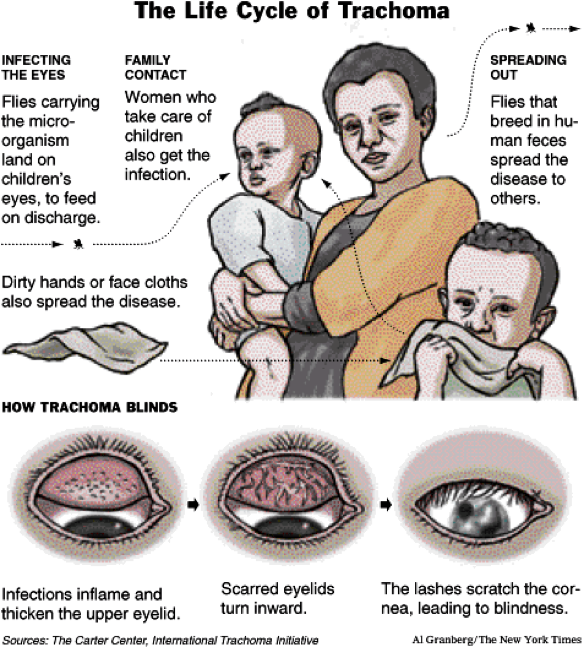
•Inflammation — follicular. The infection is just beginning. Five or more follicles — small bumps that contain lymphocytes, a type of white blood cell — are visible with magnification on the inner surface of the upper eyelid (conjunctiva).
•Inflammation — intense. In this stage, the eye is now highly infectious and becomes irritated, with a thickening or swelling of the upper eyelid.
•Eyelid scarring. Repeated infections lead to scarring of the inner eyelid; the scars often appear as white lines when examined with magnification. The eyelid may become distorted and may turn in (entropion).
•Trichiasis, or ingrown eyelashes. The scarred inner lining of the eyelid continues to deform, causing the lashes to turn in so that they rub on and scratch the transparent outer surface of the eye (cornea). Only about 1 percent of people with trachoma develop this painful condition.
•Corneal clouding. The cornea becomes affected by an inflammation that is most commonly seen under the upper lid. Continual inflammation compounded by scratching from the in-turned lashes leads to clouding of the cornea. Secondary infection can lead to development of ulcers on the cornea and eventually partial or complete blindness.
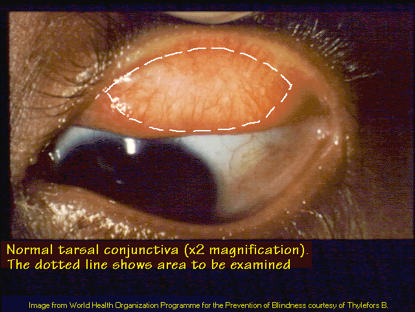
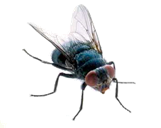
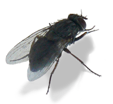
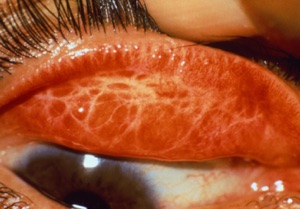
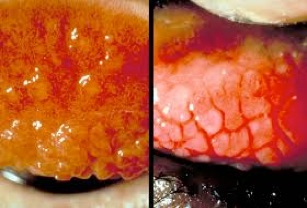
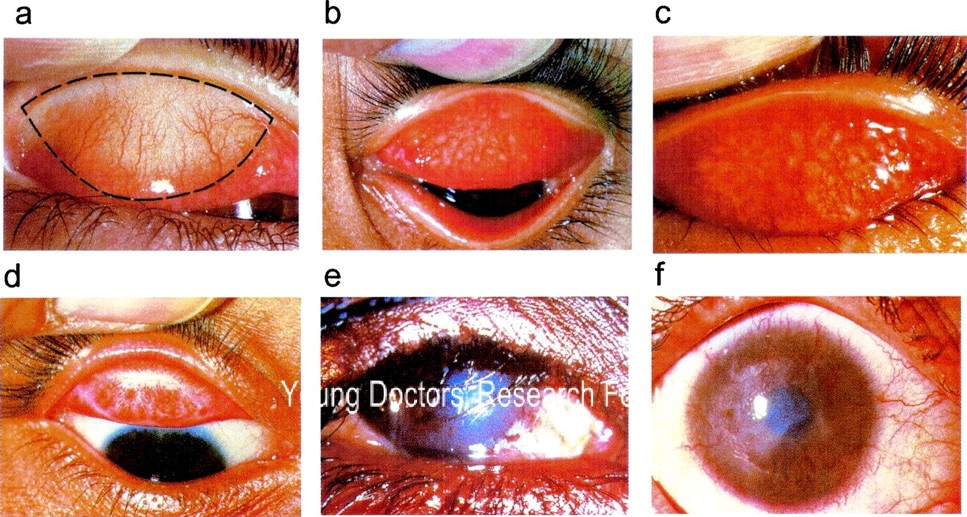
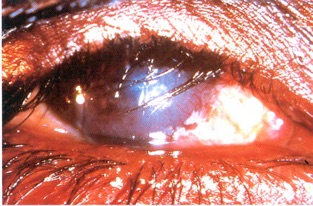
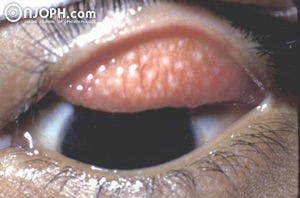
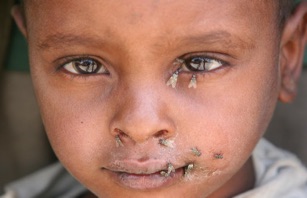

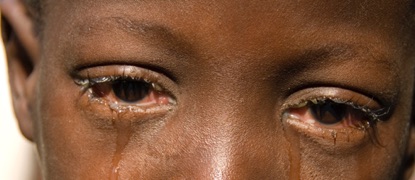

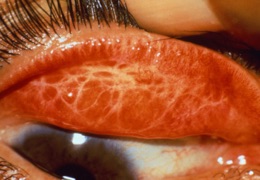
De Lairessestraat 59 1071 NT Amsterdam 020-679 71 55 omca@me.com www.omca.nl
The principal signs and symptoms in the early stages of trachoma include:
Mild itching and irritation of the eye
Discharge from the eye containing mucus or pus
As the disease progresses, later trachoma symptoms include:
Marked light sensitivity (photophobia)
Blurred vision
Eye pain
Young children are particularly susceptible to infection, but the disease progresses slowly, and the more painful symptoms may not emerge until adulthood.
The World Health Organization has identified a grading system with five stages in the development of trachoma. The stages are
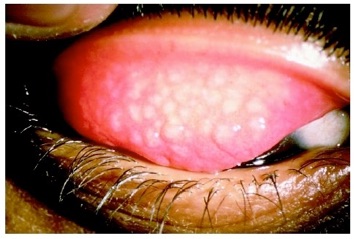
In addition, the lubricating glandular tissue in the lids — including the tear-producing glands (lacrimal glands) — can be affected. This can lead to extreme dryness, aggravating the problem even more.
When to see a doctor
Call your doctor if you or your child has itching, irritation or discharge from the eyes, especially if you recently traveled to an area where trachoma is common.


Amsterdam Eye Hospital
Oogziekenhuis Amsterdam

